Housebound, Looking at Paintings Made Over the Years
Still on crutches, so let's view things in the house
I’m still on crutches after a broken ankle, for another day, and then it’s a few weeks of just the boot cast, so this is a chance to hobble around the house and look at some of the things from past years that are here. This brief survey can give some ideas of artistic motivations, and genesis over decades.
In my studies I looked at so much art history and all of it was grist for the mill. I worked in many different ways over the years. Our brief look in this photo essay is only a very small sampling of directions explored.
The two little framed examples above were small pieces made in gouache, enamel and oil on paper, laid onto panel. There were so many of these….perhaps 50-100 in total. They were fairly labor intensive. Although the ideas came together quickly, the paint application was slow and methodical. They date from around 1979-82. Art Brut, outsider art, and medieval manuscript painting were influences at this point. There was a faux naive, intentionally awkward quality to these that I considered necessary because the intention was to tell stories, illustrate dream images and relate personal history, directly and in the simplest most immediate manner possible, with little correction or editing.
This humanist concern went on for quite a while, with a lot of works in different sizes. The works formed the basis of my MFA written thesis and graduating exhibit. This illustrative direction evolved for a few years after that with 100s more works.
At every stage I was always concerned with the idea and feeling of play. I wanted art making to be impulsive, surprising, as easy as breathing. The 2 pieces above were made almost as a relief or escape from other work. These pieces are from the early 1980s.
This desire for play still continues today. I will often just mess with the materials to see if some internal desire will manifest itself and keep me amused for a spell.
The piece above was made from destroyed works that were cut up and reassembled onto a shaped panel. I’ve always liked the piece above, but unlike a lot of my things, it did not result in a follow-up series.
In the mid to late 1980s these acrylic canvases documenting urban landscapes started. The one above is about 22 x 30 inches. The origin of these pieces was work produced much earlier, as well as some plein air pieces what were made during my MFA years. So, things do not pop up entirely out of the blue.
The canvas above is larger, in the 3 foot range. Both document areas around the Oshawa beach, an area which was a sanctuary when I lived in that city.
As ugly and oil stained as the old harbor scene above seems, it brought back fond memories of childhood, of playing in old construction yards of the oil refinery at my home town, Kamsack, Saskatchewan.
And then there were large canvases 4 x 5 feet (the 2 above) that were completed in Oshawa in the mid to late 1980s, all documenting various bits of the city. There were many of these, with only a couple remaining with me.
Above, on canvas, in the 2 foot range, made in the mid 1980s, still a young man. I’ve always made self portraits at every stage, and in a variety of styles and methods.
Above, a smallish canvas from the late 1980s. Like smart artists everywhere my wife and I survived and thrived by being practical and financially careful. I painted the piece above just as a storm was rolling in near a conservation area in Oshawa. I seldom paint cars. This car was a great deal and it ran well for a number of years. My wife loved this car…I hated it! :) I still like the painting though.
These little oil on panel pieces (3 pics directly above) were made in the early 1990s. The panel size was taken directly from Whistler’s small sketch size. Oil paints were lovely to work with on this small scale.
The intimate little piece above dates from 2005 and is from a long series of rural landscapes documenting my home and surrounding area. The works are small and were made during my teaching years. The size and immediacy of approach made it possible to do quick works while maintaining a busy teaching schedule. This is still a favorite piece from the last few decades.
Above, a tiny self portrait on panel, India ink and acrylic, made during my teaching breaks during the day. A lot of the things I made at school during these years were media examples for the students. So, I’d make something like this and then they would do something similar with their own face and mirror, in a class project.
Or this, which I made out of tin cans and rivets. I couldn’t have students work this idea because it would take too many pairs of gloves and tin snips (and likely too much bleeding), but we did do something similar by building with cardboard.
A grade 9 class did use this sculpture above as a media example. They had to build a standing figure on wooden pedestal, using heavy wire armature, screws, paper mache, and added assemblage bits, and use painted and printed matter to finish and title the piece. My piece was called ‘Pinocchio Makes a Move‘. Sorry for my crappy photos….I couldn’t get the piece off the shelf to photograph properly because of my crutches.
It was always thrilling when I found or invented a student project that I was really excited to carry out with the kids. In the case above, each student had to find a frontal image of a mammal to serve as their subject. They received a 12 x 12 inch piece of good-one-side quarter inch plywood which they would later shape with electric jig saws. On a sheet of white bond paper they were to draw the head of their animal and model it with a maximum of 3 values with acrylics, from light to dark. A few other colors could be used as accents for eyes and such. Over top of this they had to use nib and India ink to further model, define and texture the head. Once the head painting was complete they could cut it out with scissors, trace it onto the plywood sheet, bi-sect the wooden pieces and join them as shown with glue, nails, and 1 x 2 board. The whole thing was painted black prior to gluing the animal down. All the finished sculptures were varnished for protection at the end of the project.
We had a policy of showing class projects in school-wide exhibits, on pedestals in public areas of the school, for sculptural work, and framed properly and hung on hall walls for paintings and drawings.
All of these painted sculptures were charming beyond belief. Of course students often kept their work at the end of the year, but many were also left and were sold to townspeople at the school yard sale in the fall. And many student pieces also ended up in the homes of faculty.
And there sure are a lot of these fridge magnets in the house. Even though I mail so many off each week, they keep accumulating because I like making them so much. 2 full sides of my fridge are covered, and I have 4 of these magnetized panels that are also pretty full. Plus a small box full as well!
As always, new work gets posted almost immediately to my 2 sites:


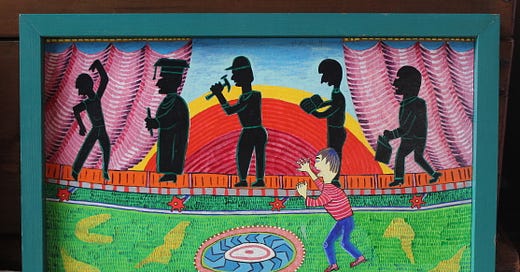



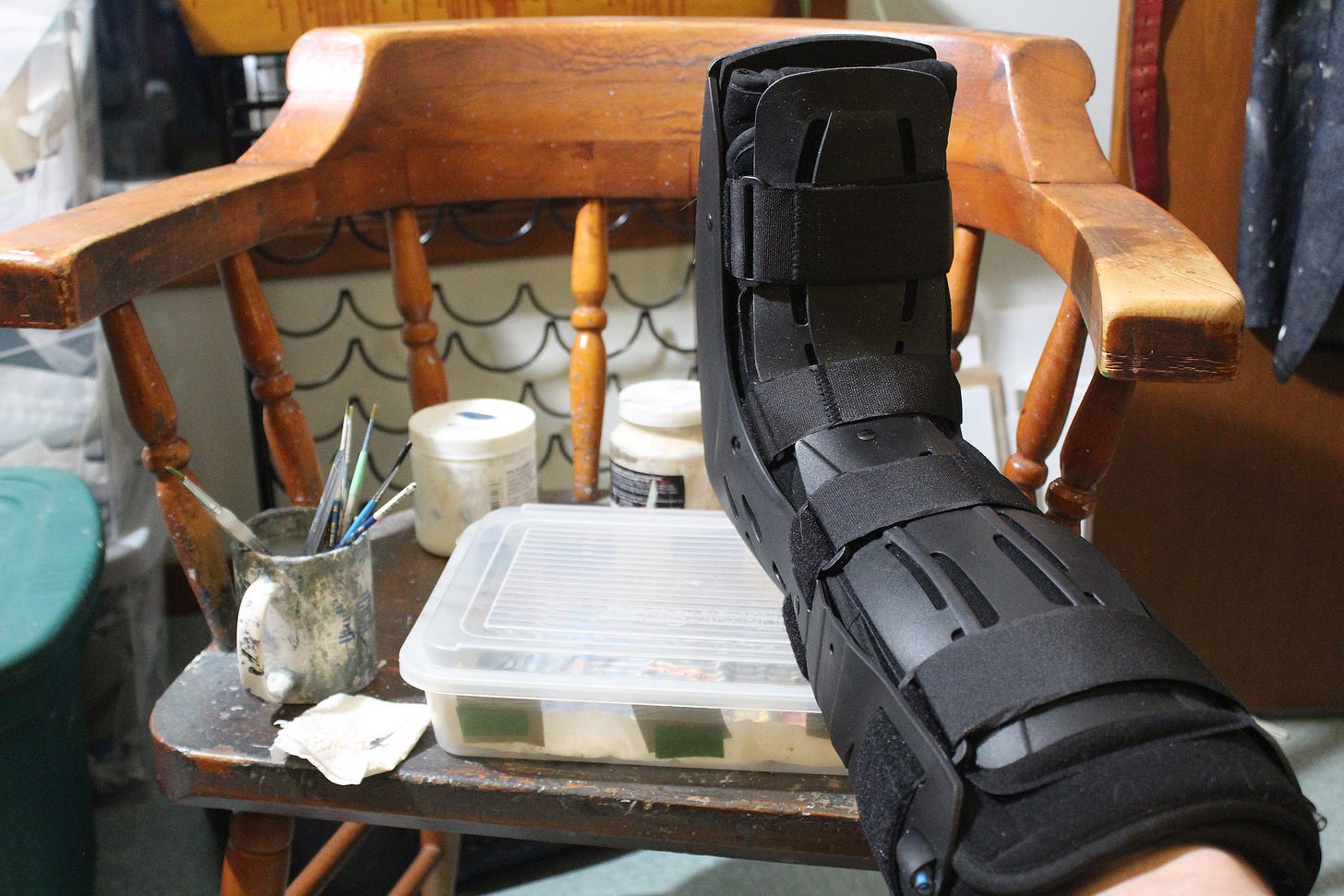
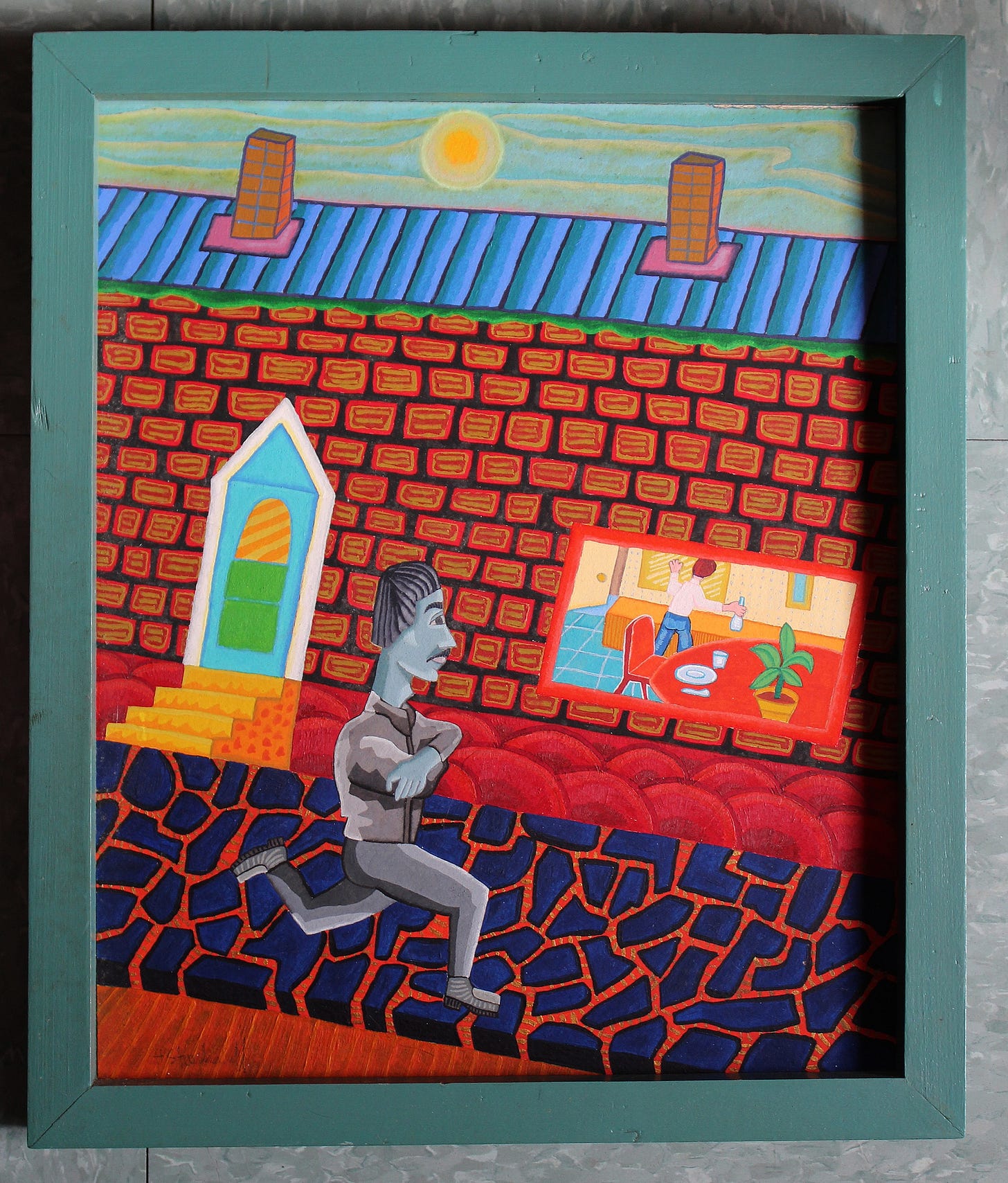
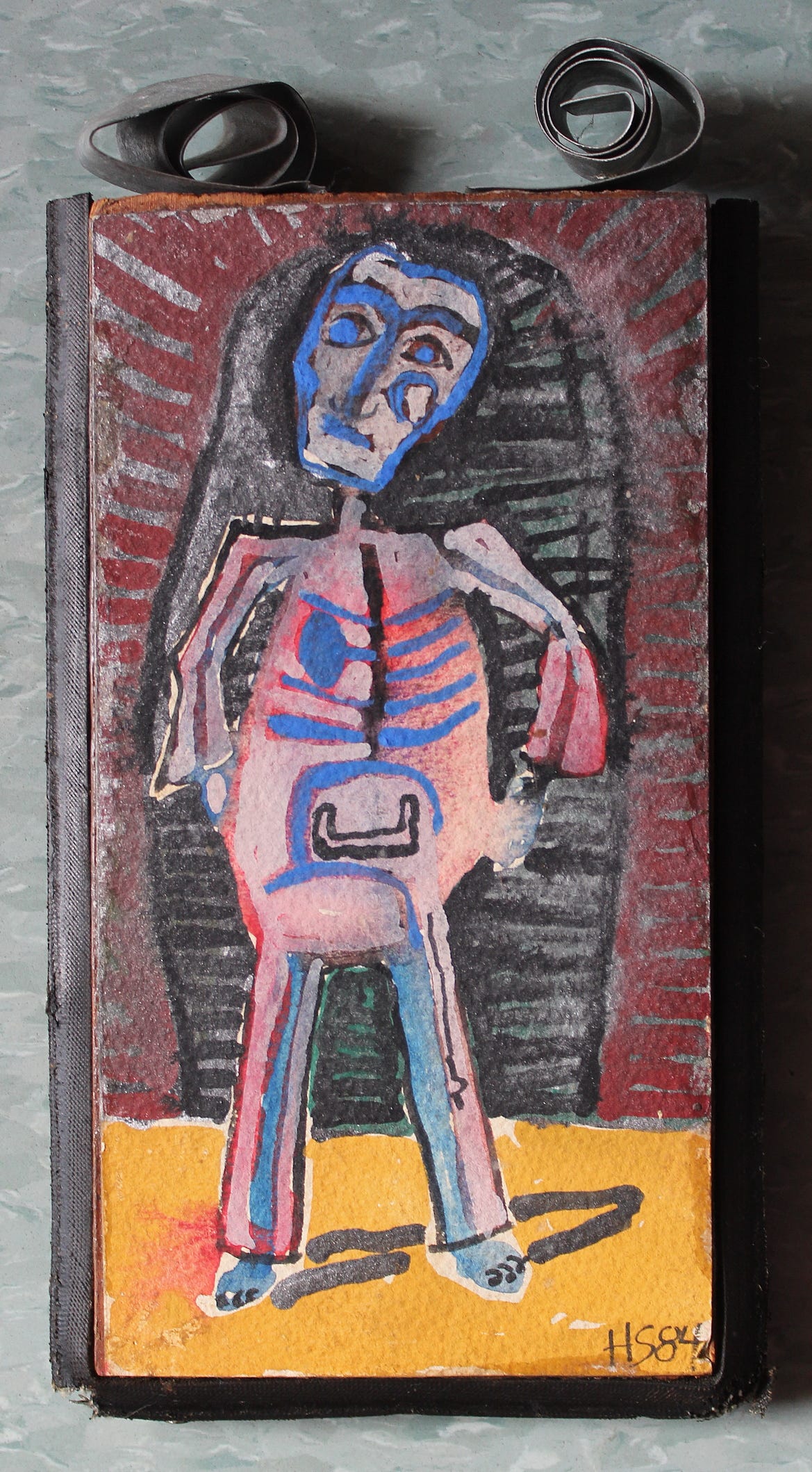
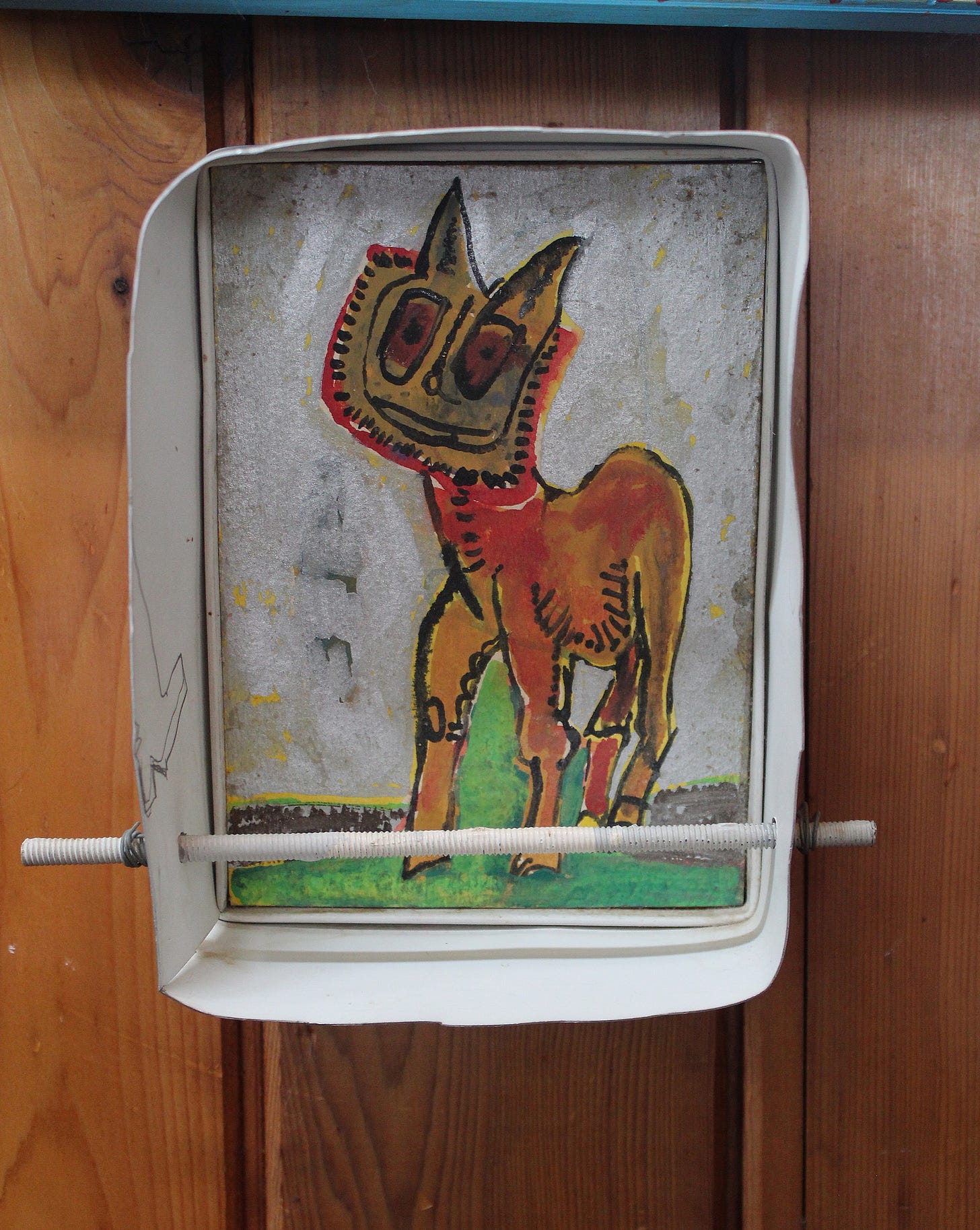
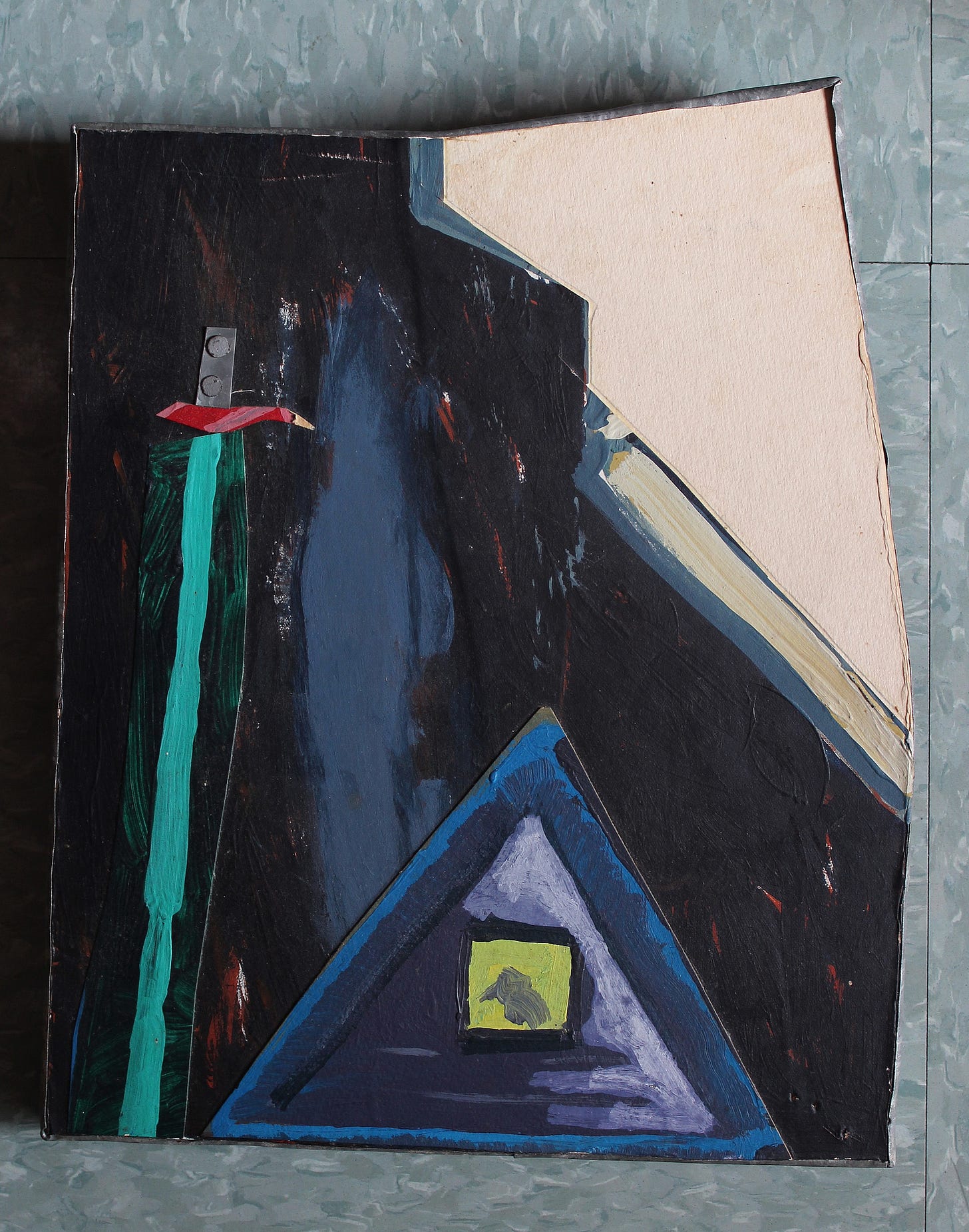


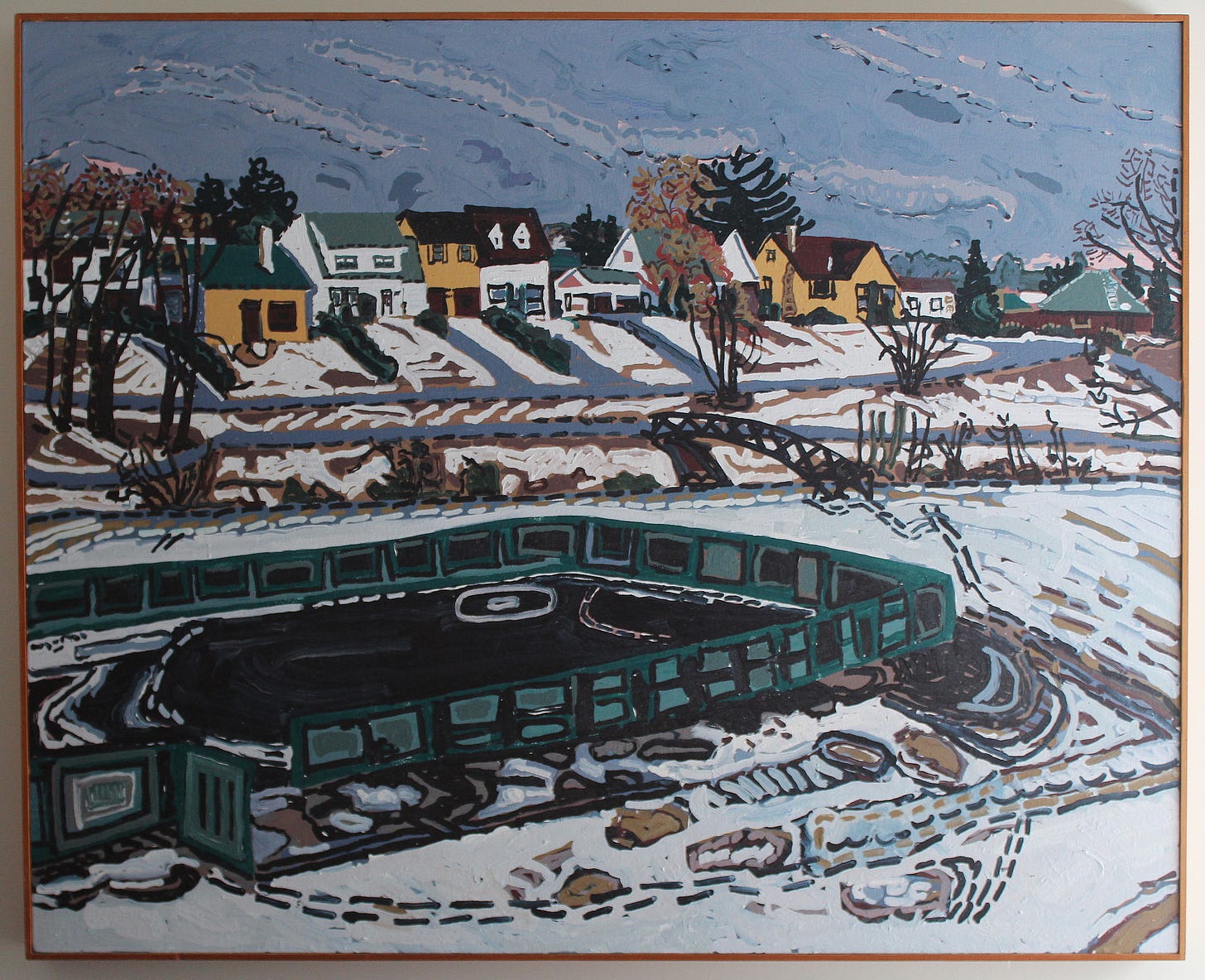

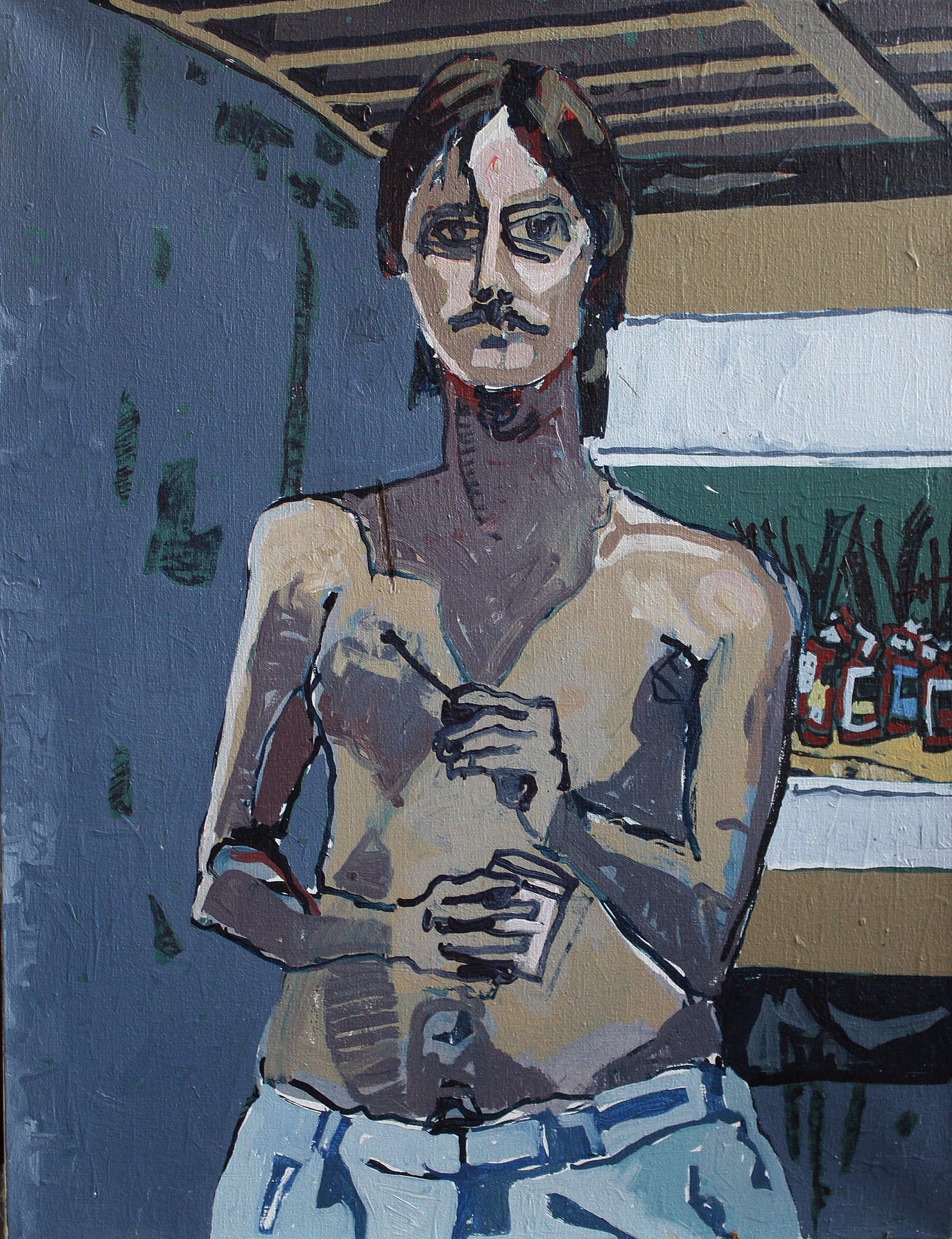
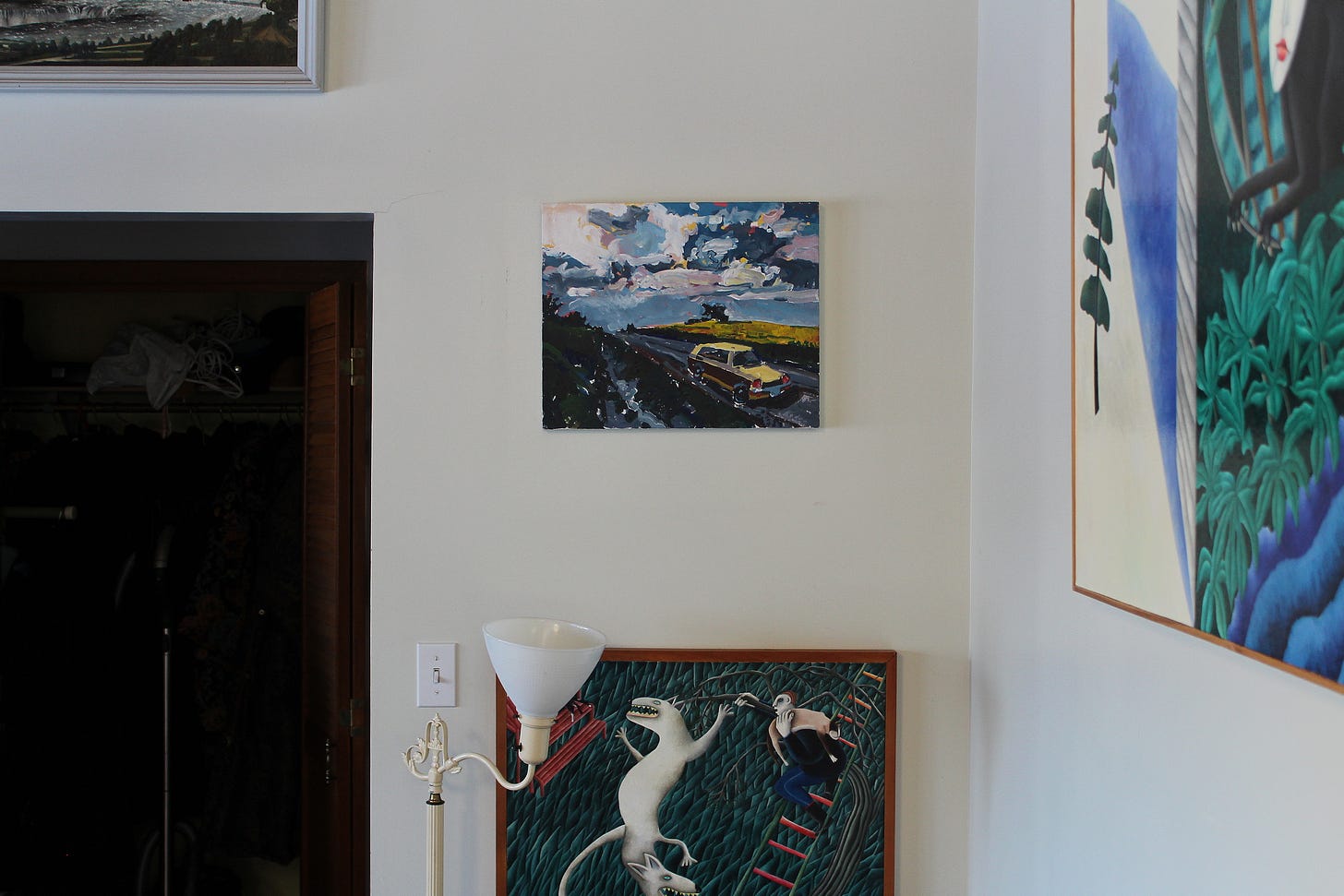
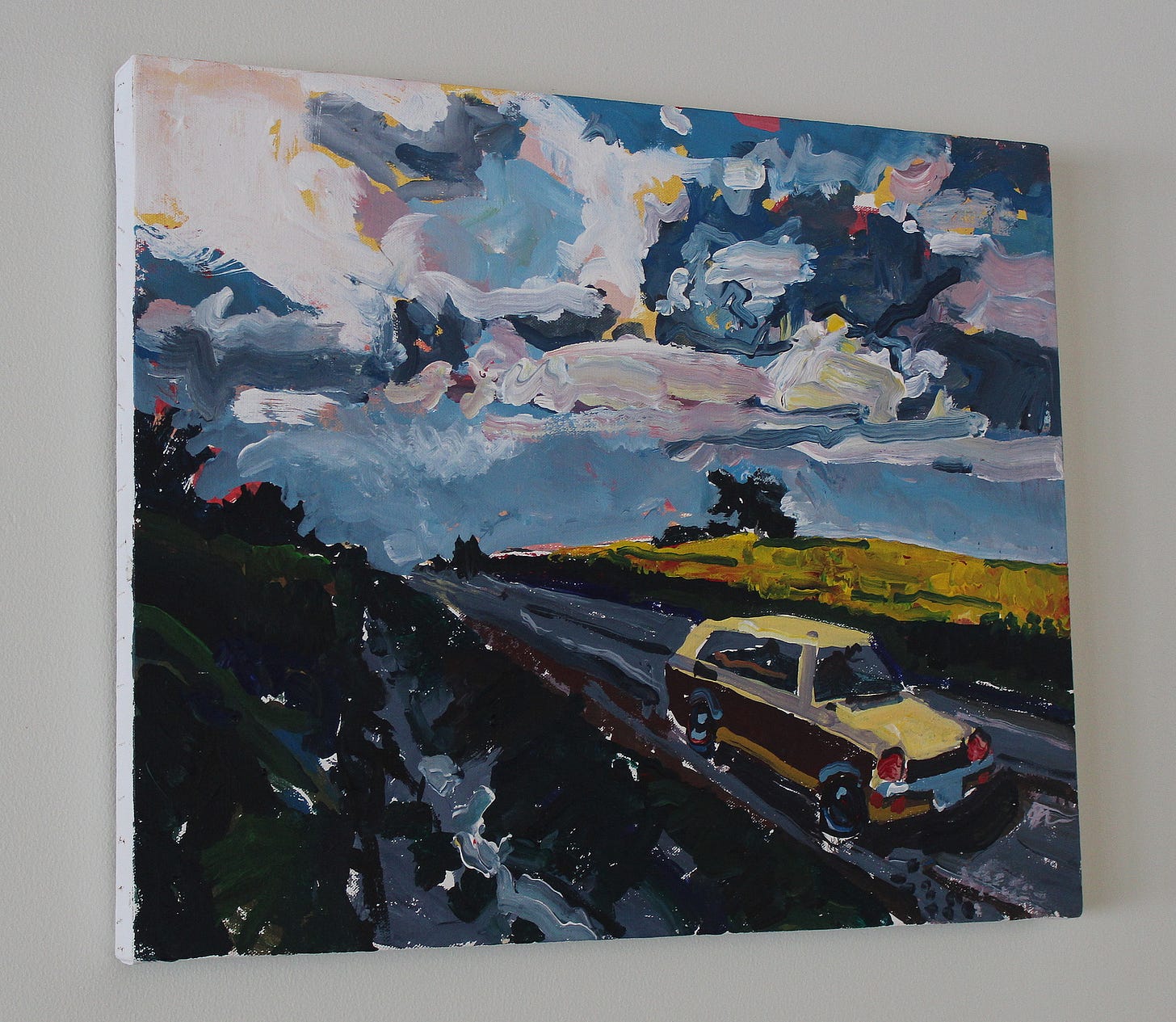
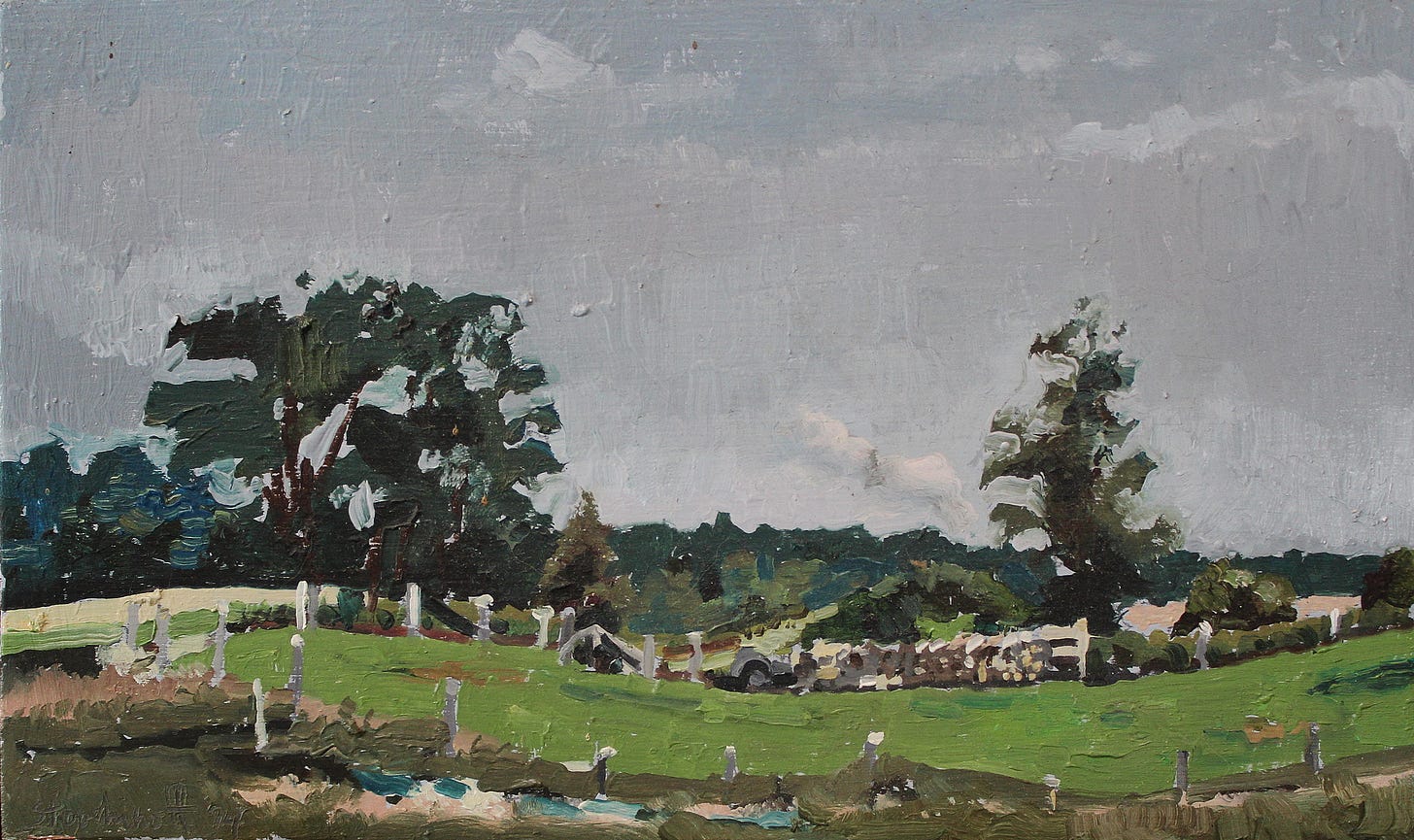
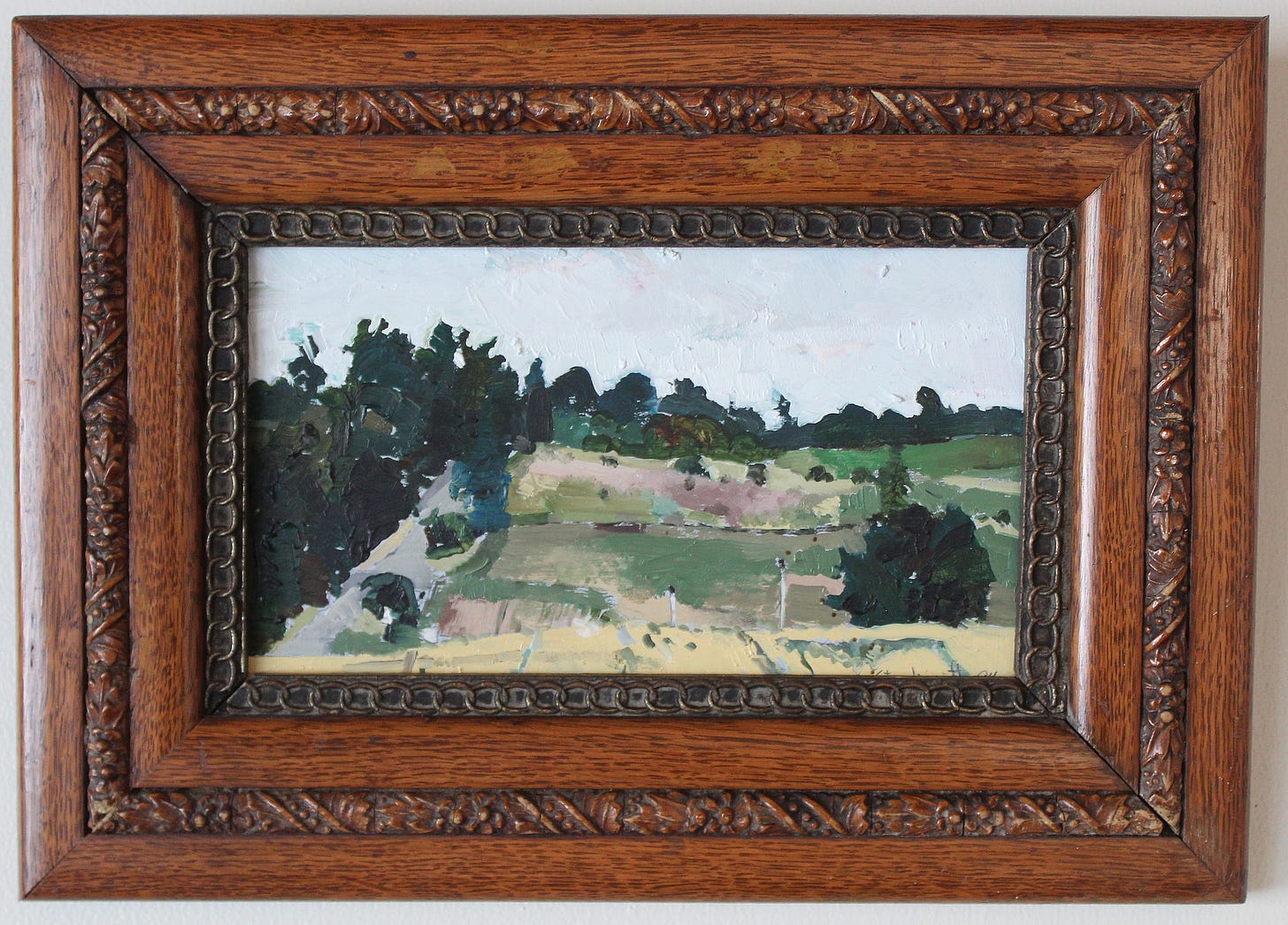
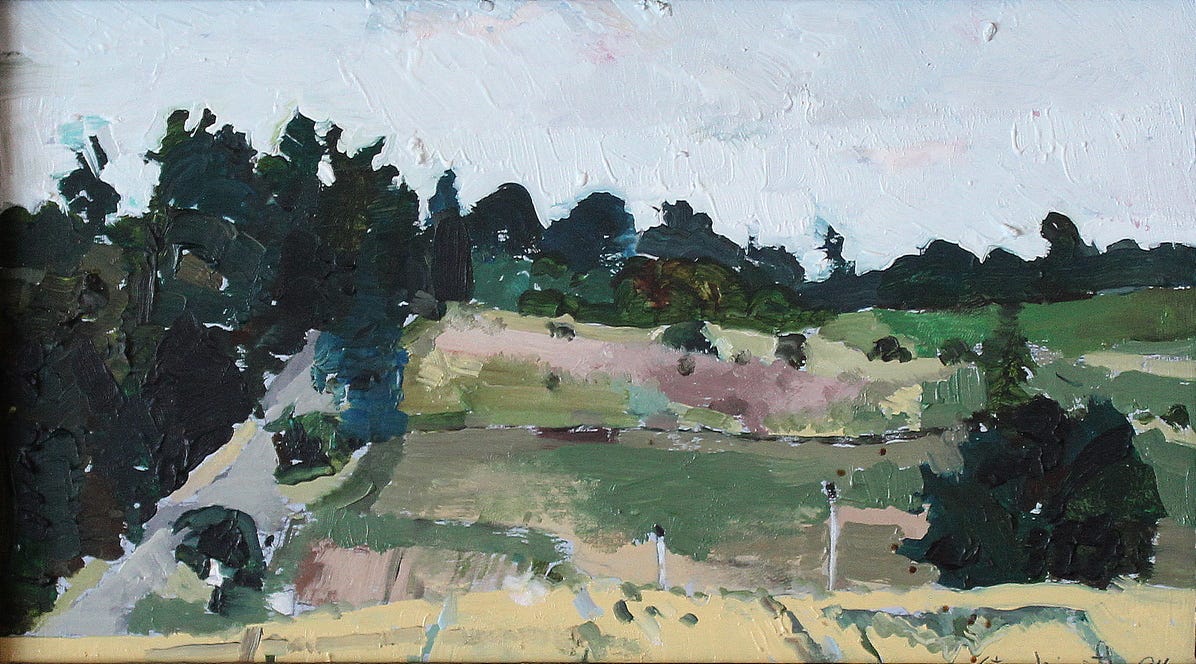
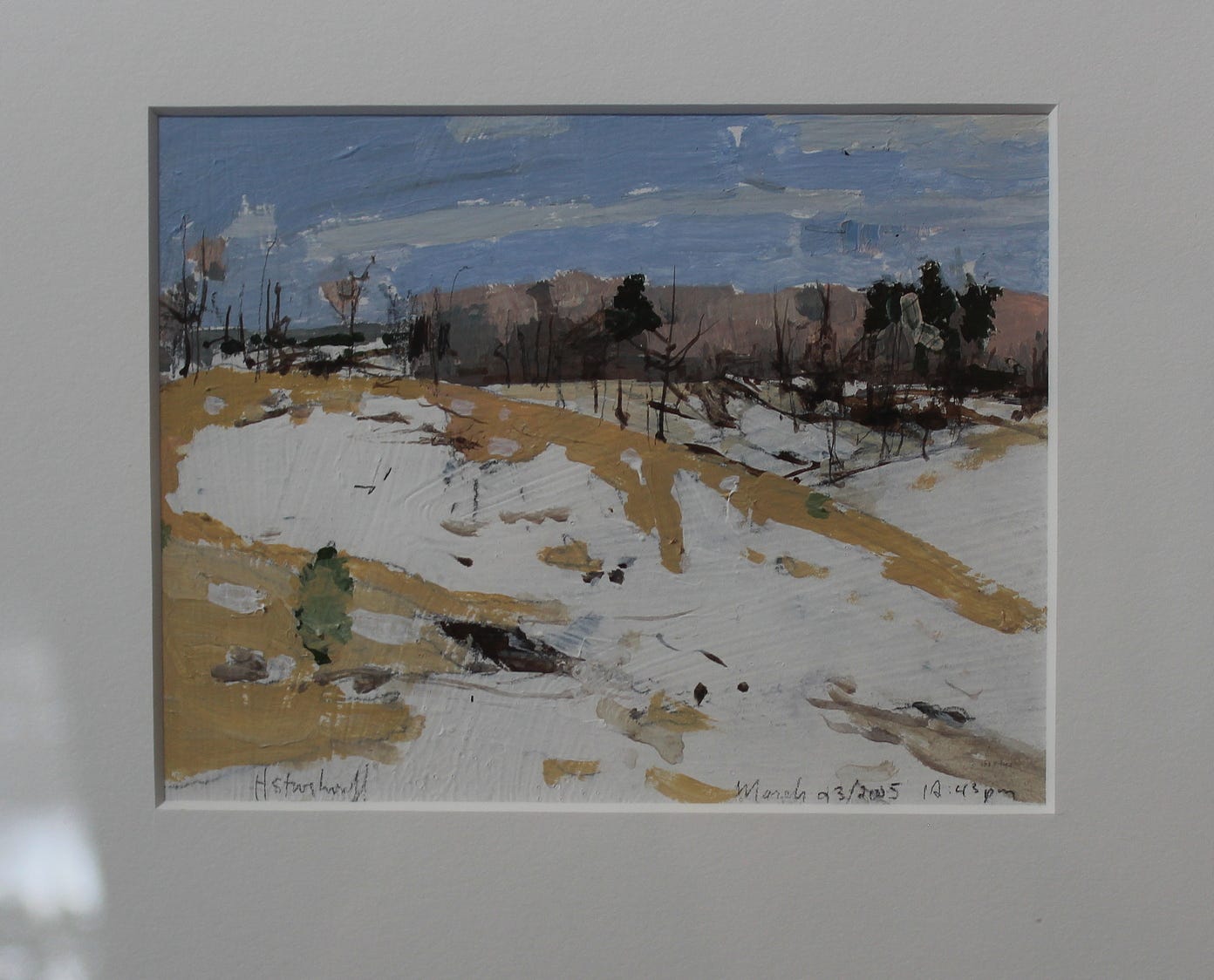
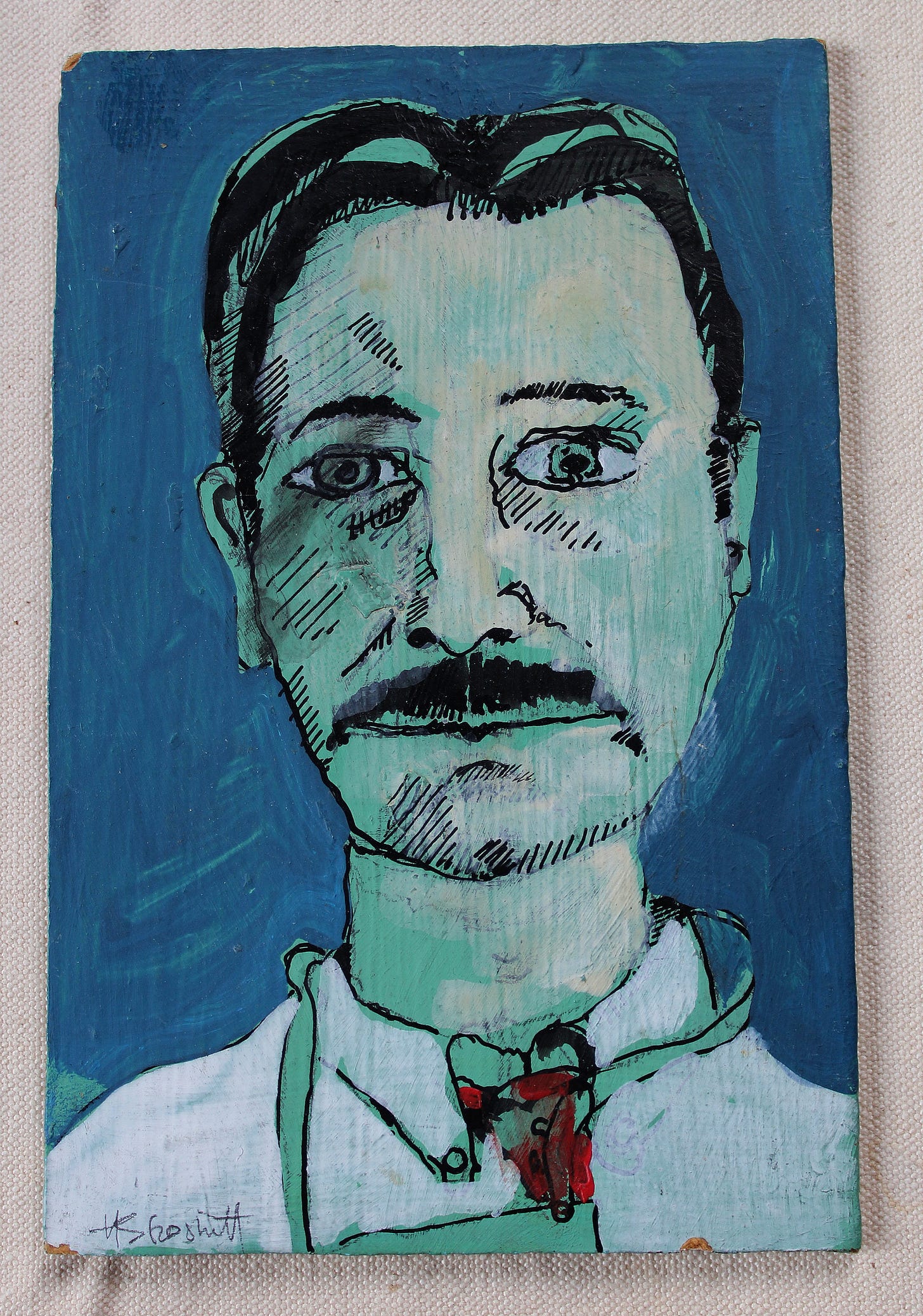
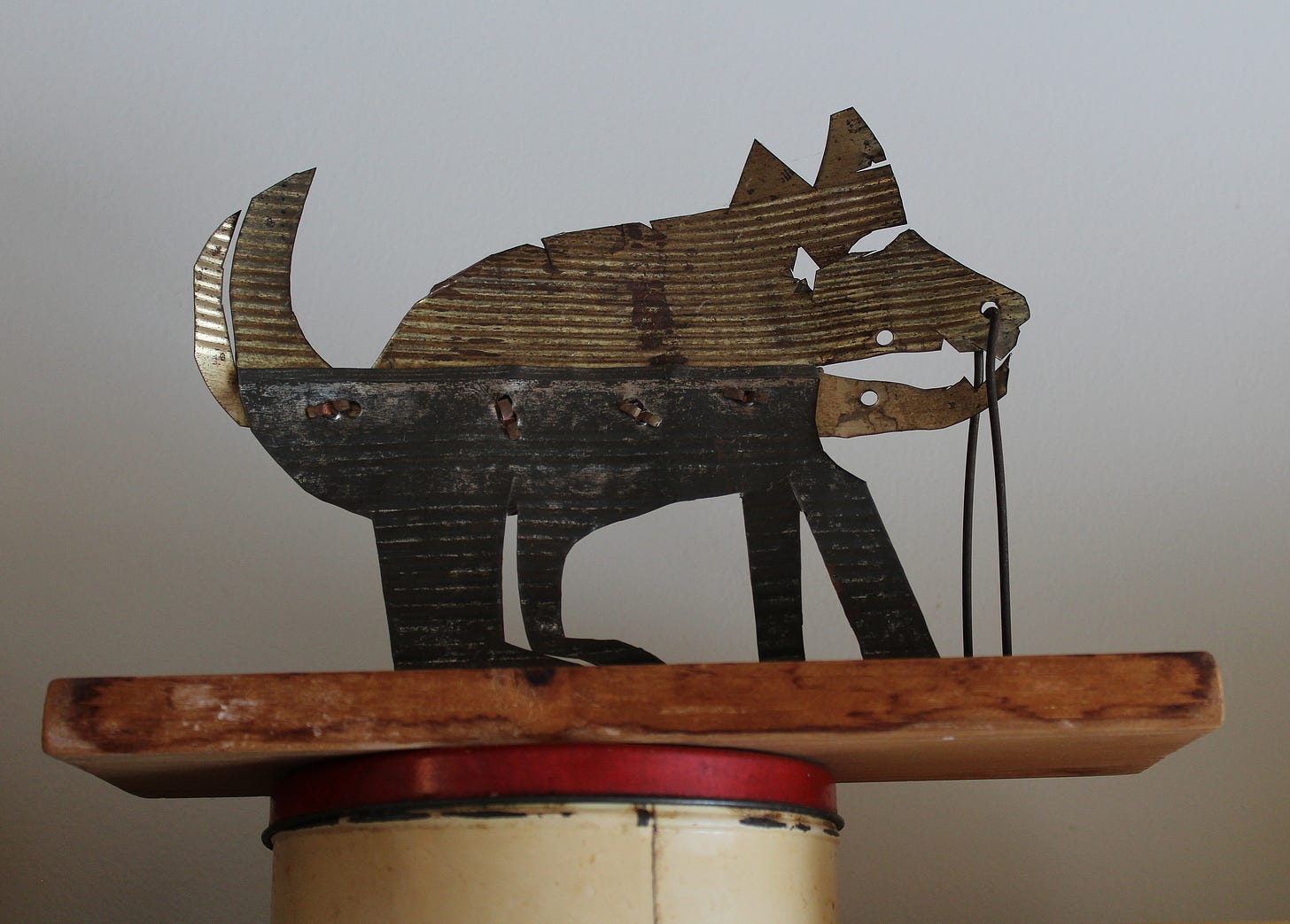

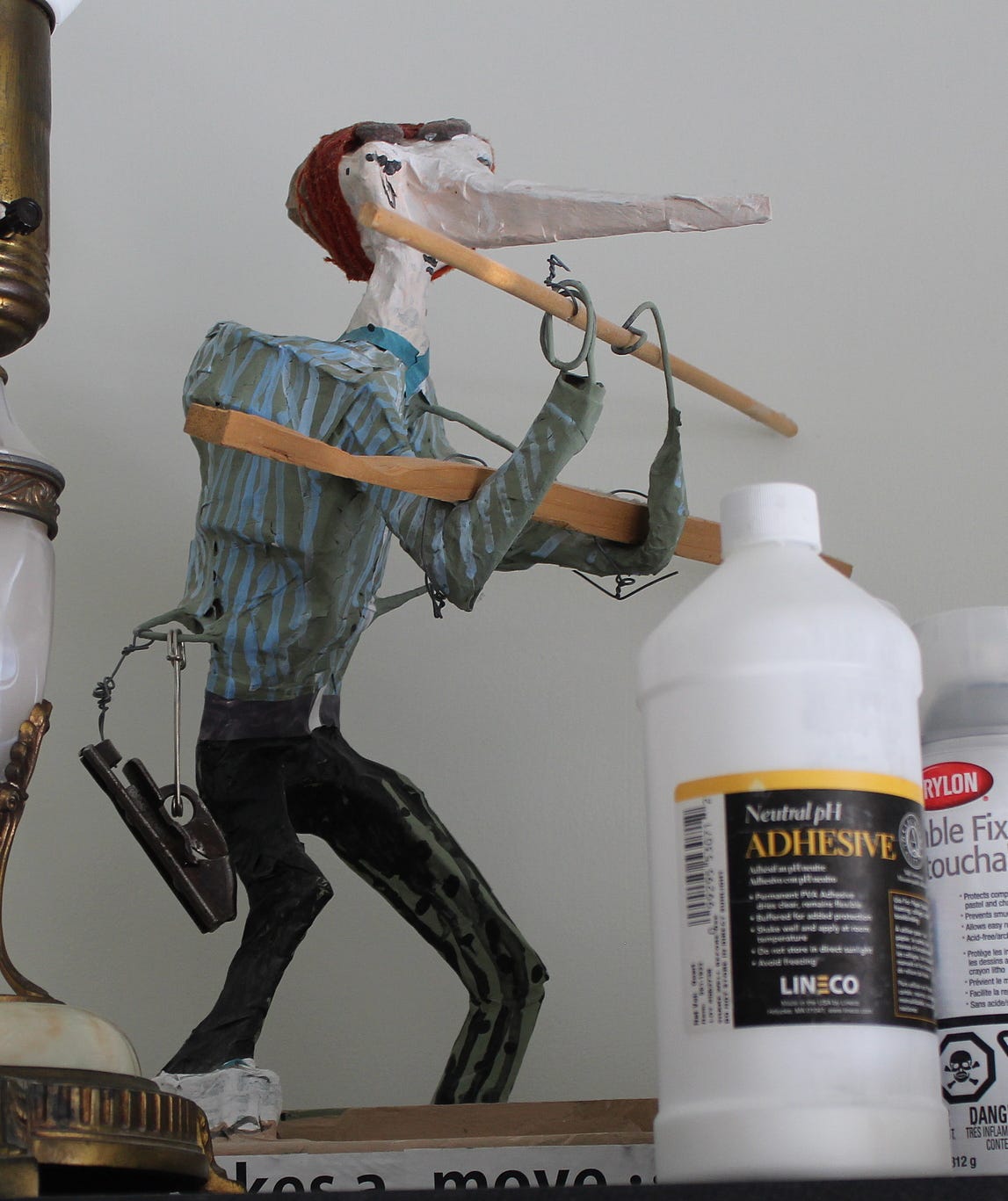
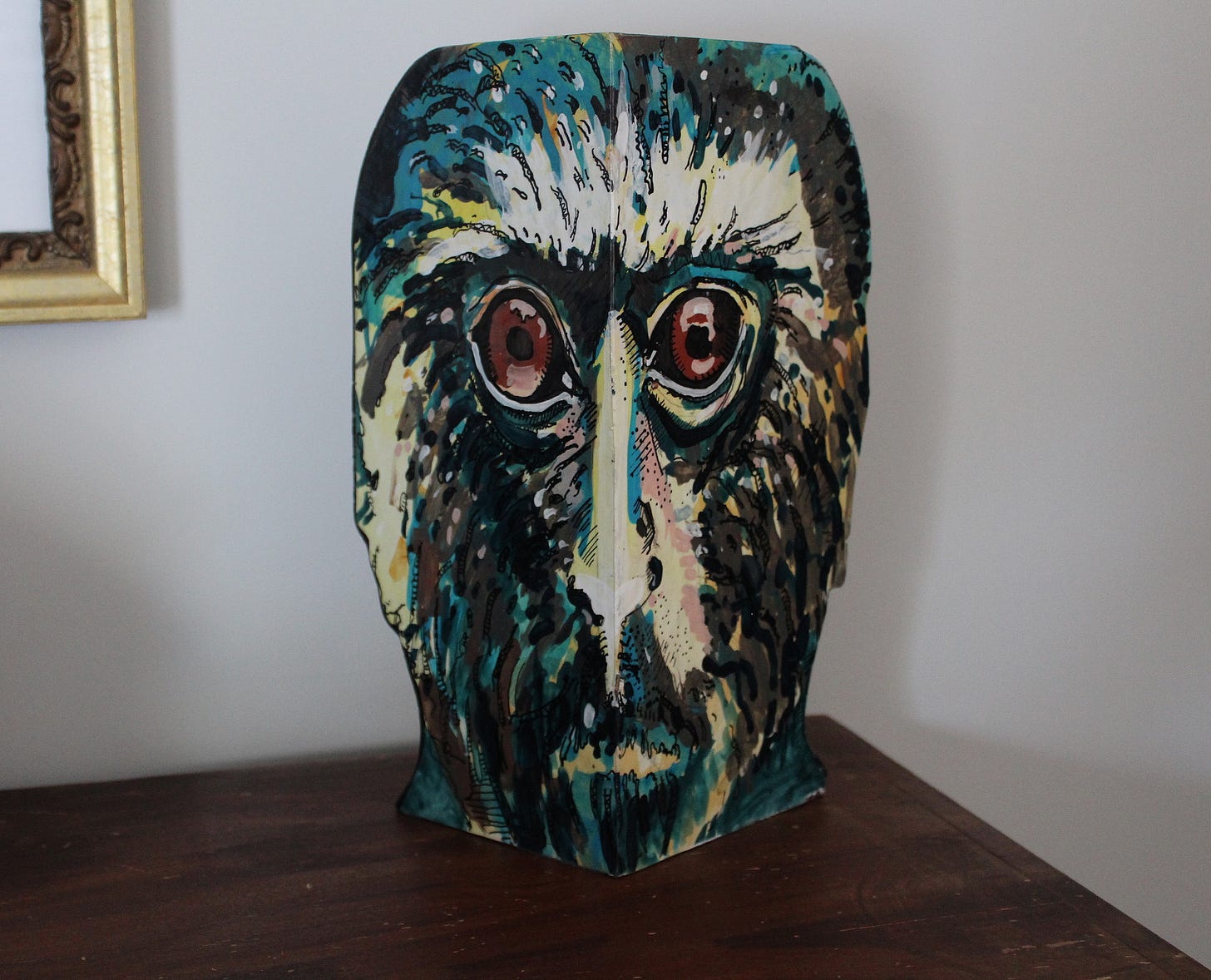

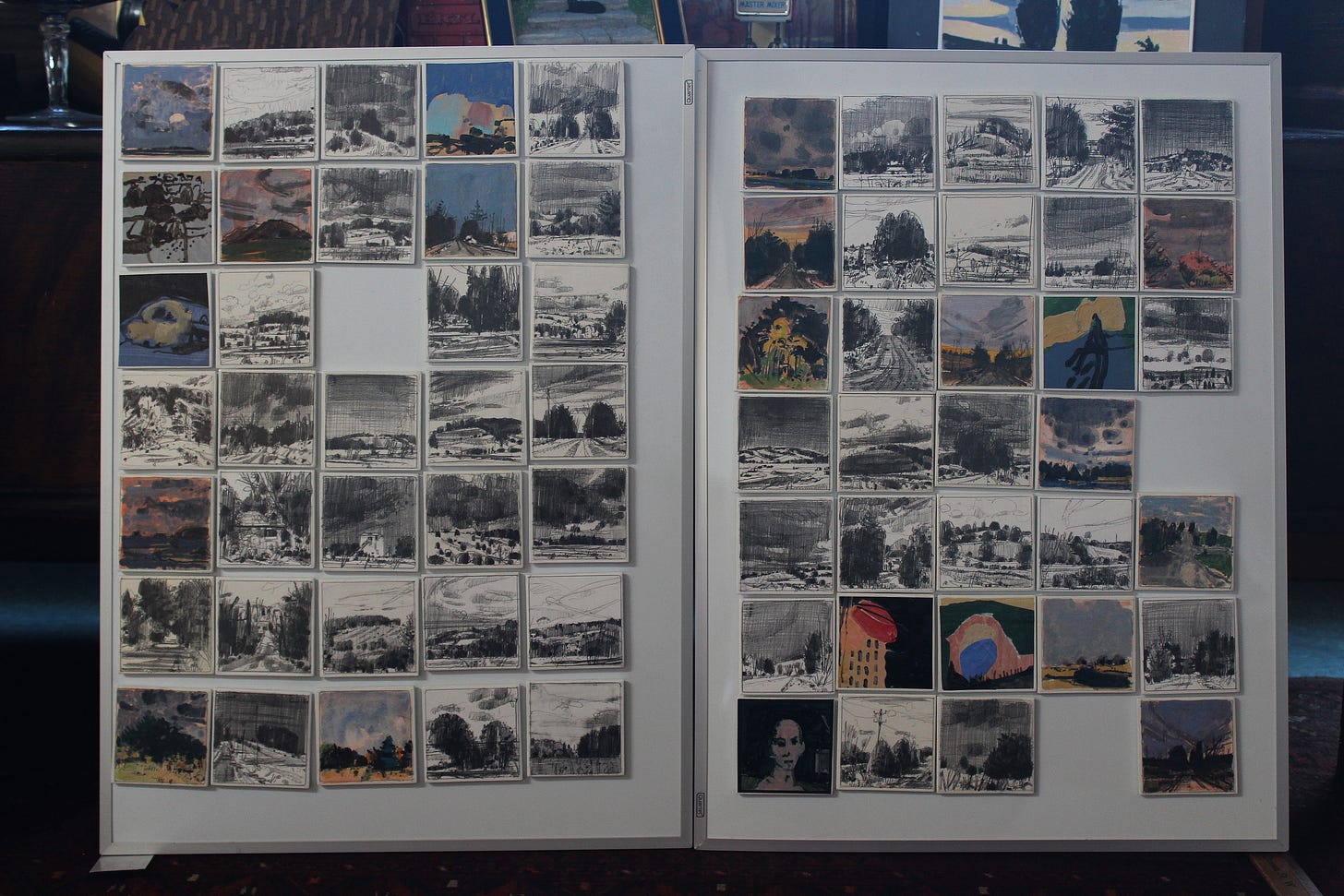
So much fun to see on this chilly, gloomy, overcast day in California. The variety and evolution -- fascinating. Even though you make it seem facile and quick, much of your work is complex and layered. How do you do this? This makes we wish I'd held on to more of my work, but where would it go? You seem to have worked out the/your storage problem, often if not always a challenge for the artist.
Fun pervades many of these pieces. A lot of joy! I chuckled at the mention of the car, and the different opinions you and your wife had about it. And I love that you've kept up with the self-portraits.
This period on crutches can't have been easy, but it has led to this wonderful look at a piece of your art history.
Thank you, Harry. I enjoyed this review of your work. I particularly love that oil painting of the snowy hill with the ochre grass showing through. It reminds me very strongly of a painting we had on exhibit at the Florence Griswold House in the early 1980s (in my hometown, Old Lyme, Connecticut) when I was a curatorial assistant there during my college summers. I feel like it was a John Twatchman or Willard Metcalf.. but anyway, I like your style better than their wispier Impressionism. ☺️